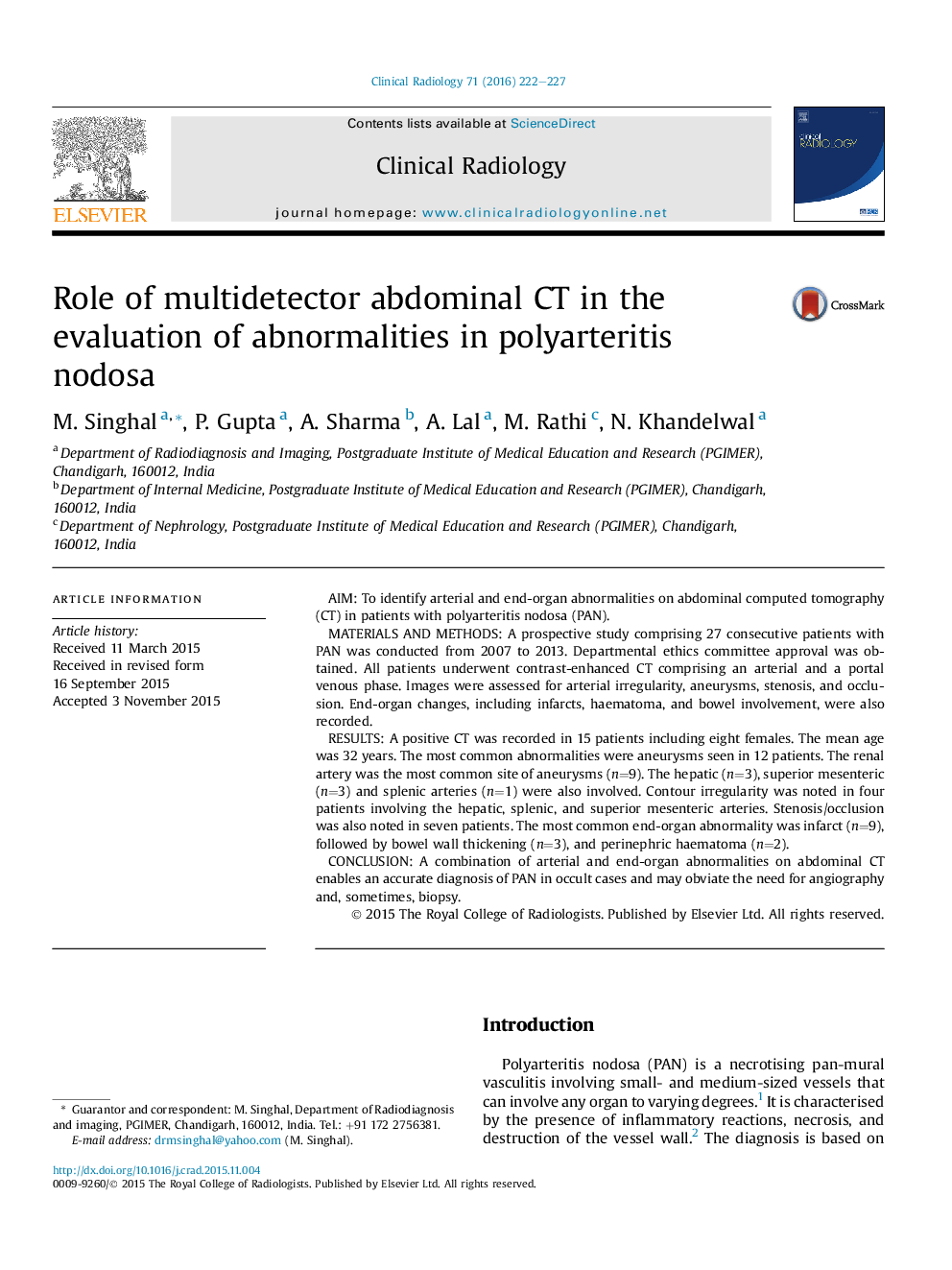| Article ID | Journal | Published Year | Pages | File Type |
|---|---|---|---|---|
| 3981375 | Clinical Radiology | 2016 | 6 Pages |
•A combination of findings on CT allows a diagnosis of PAN.•Specific findings include arterial and end organ abnormalities.•The most common abnormalities on CTA and CT are aneurysms and infarcts.
AimTo identify arterial and end-organ abnormalities on abdominal computed tomography (CT) in patients with polyarteritis nodosa (PAN).Materials and methodsA prospective study comprising 27 consecutive patients with PAN was conducted from 2007 to 2013. Departmental ethics committee approval was obtained. All patients underwent contrast-enhanced CT comprising an arterial and a portal venous phase. Images were assessed for arterial irregularity, aneurysms, stenosis, and occlusion. End-organ changes, including infarcts, haematoma, and bowel involvement, were also recorded.ResultsA positive CT was recorded in 15 patients including eight females. The mean age was 32 years. The most common abnormalities were aneurysms seen in 12 patients. The renal artery was the most common site of aneurysms (n=9). The hepatic (n=3), superior mesenteric (n=3) and splenic arteries (n=1) were also involved. Contour irregularity was noted in four patients involving the hepatic, splenic, and superior mesenteric arteries. Stenosis/occlusion was also noted in seven patients. The most common end-organ abnormality was infarct (n=9), followed by bowel wall thickening (n=3), and perinephric haematoma (n=2).ConclusionA combination of arterial and end-organ abnormalities on abdominal CT enables an accurate diagnosis of PAN in occult cases and may obviate the need for angiography and, sometimes, biopsy.
